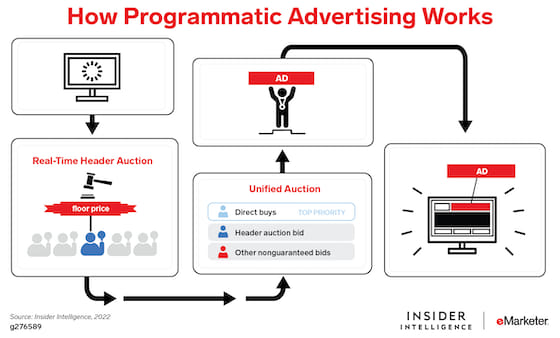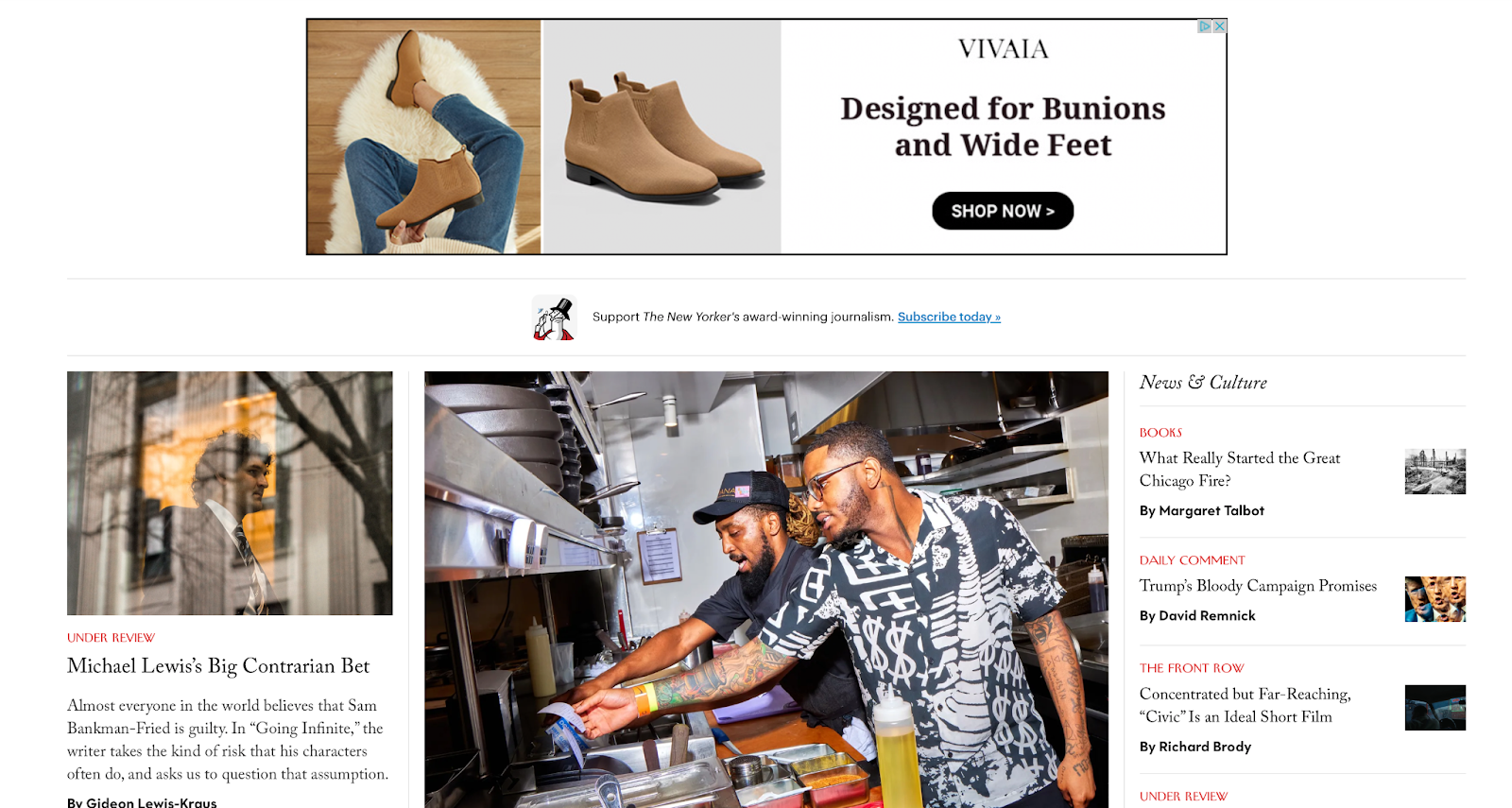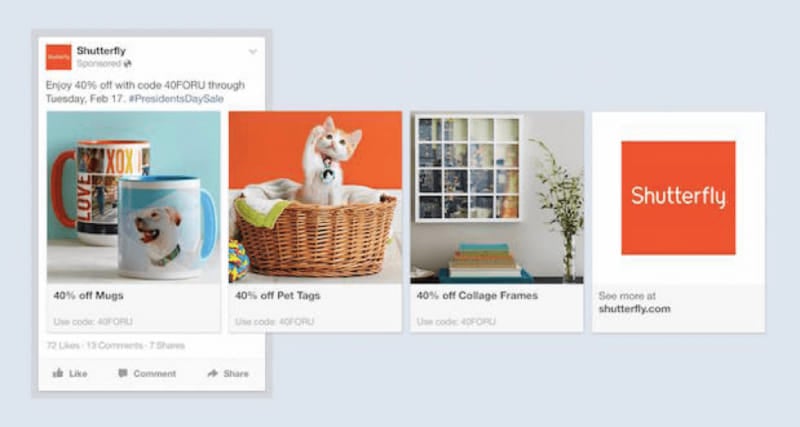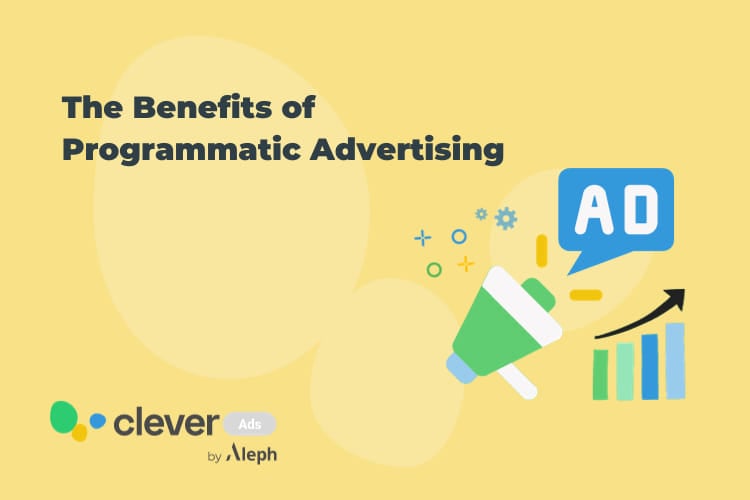The Benefits of Programmatic Advertising to Reach More Target Audiences
There’s a trend you want to get in on and it’s called programmatic advertising. According to forecasts, the global programmatic advertising spend will reach an impressive 724.84 billion USD by 2024.
The U.S. remains the leading market for programmatic advertising. By 2021, U.S. businesses had already sidelined 54% of their media budgets to this – and other countries are quickly following suit.
Why? Programmatic advertising is seen as somewhat of a marketing revolution. It has reshaped how brands connect with their audiences. Marketing strategy and technology are used in tandem, resulting in precise, efficient, and effective campaigns.
So can programmatic advertising benefit you? This article will discuss for marketers to help you expand your reach.
What is Programmatic Advertising?
Programmatic advertising is an automated process of buying and selling digital advertising space on domains. Historically, advertising has always been a long-drawn-out process. Marketers and publishers had to negotiate heavily with one another.
However, with programmatic ad buying, this is all done via technology. Automated buying of appropriate digital ad space has, consequently, become an indispensable tool for marketers around the world.
As simple as the explanation may be, the software is far from it. Programmatic advertising is data-driven. Algorithms streamline and optimize the entire process so that it reaches the right audience. That means advertisers can be more accurate in who they target. It’s also much easier to control ad spending due to the real-time nature of the process.

Let’s look at this in more detail: ad space is bought in real-time auctions. The moment a website visitor loads a page, the ads are purchased. This means the right audiences see the right ads for them at the perfect time.
To summarize, here are the three main steps involved in programmatic advertising:
- An individual visits a website where ads are allowed.
- The demand-side platform (DSP) and the supply-side platform (SSP) find and deliver an ad that is relevant to that individual.
- The ad appears on the website the individual is on.
All of this happens instantly and website visitors rarely see a delay in an ad appearing.
The Rise of Programmatic Advertising
Digital advertising has evolved significantly in recent years, which has meant that marketing strategies have too. Gone are static banners manually placed on websites – like a city billboard, these randomly placed ads rarely reached a relevant passer-by.
Traditional advertising had its limitations. These fixed (and not always successful) ads had to be negotiated between advertisers and publishers. With digitization appearing more and more, the limitations became obvious. Advertisers simply couldn’t keep up with the number of advertising spaces available and a lot of it didn’t get used.
Programmatic advertising was, thus, a revelation. It harnessed data analysis, automation, and decision-making in real-time, bringing about unparalleled efficiency.
As you can imagine, the growth of programmatic advertising has been remarkable. Over time, it has integrated seamlessly into all digital channels, including mobile, display, social media, and video.
10 Reasons to Choose Programmatic Advertising
There are numerous reasons businesses are embracing programmatic advertising. Here are some of its benefits.
1. Efficiency
Programmatic advertising automates the entire process of buying ads. It optimizes digital campaigns, eliminating the need for manual negotiations with publishers. This saves time as well as resources for publishers and advertisers alike.
2. Targeted Precision
The data and technology used in programmatic advertising allows businesses to more effectively target specific demographics, interests, behaviors, and contexts. This ensures relevant users see the right ads.

3. Auctions in Real-time
Programmatic advertising uses real-time auctions to place ads. This means that whenever a visitor loads a webpage, the ads are bought and displayed immediately. As it happens instantaneously, this ensures visitors see a suitable ad there and then.
4. Transparency
The platforms running programmatic ads offer insights into campaign data and ad performances. This transparency allows advertisers to track key metrics like impressions, clicks, and conversions. Ultimately, this makes for ad optimization and guides future strategies.
5. Cost-effectiveness
Compared to traditional methods, programmatic advertising offers better value for money. The platforms allow advertisers to set budgets and bid strategies. This means they can precisely control costs while maximizing the impact of campaigns.
6. Cross-channel Reach
With ads spanning all digital channels like social media, video, and mobile, it’s clear that programmatic advertising is versatile. It means advertisers can engage with their target audience through a range of platforms. This increases their brand visibility.
7. Personalization
One of the biggest benefits of programmatic advertising is personalization. The software creates personalized ad experiences based on user preferences and browsing history. This enhances target audience engagement and conversion rates as a consequence. For example, if a customer has previously shown an interest in business communication tools, they might be shown an ad on internet phone services.
8. Access to Self-service Platforms
The possibility of self-service platforms enables smaller brands to compete with larger ones. This is due to there being no need for costly intermediaries.

9. In-house Capabilities
As well as using self-service platforms, marketers can conduct programmatic advertising in-house. This gives businesses more control over their campaigns, adds to cost-saving, and reduces the reliance on external agencies.
10. Advanced Options for Ad Targeting
It’s not only your audience you can target with programmatic advertising. Ad targeting includes contextual targeting, keyword targeting, geotargeting, and retargeting (more on this in a bit). This means you can fine-tune campaigns so they’re as effective as possible.
How to Use Programmatic Advertising to Reach More Audiences
The biggest benefit of programmatic advertising is its ability to reach more people. The platforms do this in a range of ways. Here are three examples of how it can work.
Precise and Contextual Targeting
Data-driven insights enable marketers to use precise targeting. Sophisticated algorithms can pinpoint audiences by demographics and contexts. Contextual advertising plays a part within programmatic advertising. This means you’re going to see relevant ads for the pages they’re serving. For instance, you’ll see ads for running shoes on a website explaining how to train for a marathon rather than furniture ads.
Branded domains play a pivotal role in this process too, as Google prefers custom domains and will rank them higher than ones that are less specific. For programmatic advertising, branded domain names improve the effectiveness of ad campaigns.
For example, a fitness apparel brand promoting yoga leggings will seek to reach a certain demographic, perhaps women aged 25-40 who are interested in wellness. The algorithm would analyze web user data and online behaviors to identify people who fit into this profile.
The platform will also target those who visit websites about yoga or follow yoga influencers on social media. Online shopping behaviors will also identify people who are searching for similar apparel. Finally, the targeted ads will be placed on platforms with content related to wellness, yoga, and fitness. This means that when a user visits the site, they’ll see the tailored ad.

Geo-targeting
Programmatic advertising creates opportunities for location-based targeting, meaning ads are specific to a user’s geographic location. This is particularly beneficial to local businesses that want to attract nearby customers.
What does this look like in practice? Let’s say a local pizzeria wants to boost its lunchtime delivery service. The target audience could be anyone within a five-mile radius. Marketers can use programmatic advertising to set up a geo-fence accordingly, which acts as a virtual boundary around the restaurant.
When customers browse mobile apps, social media platforms, or websites, the algorithm will detect their location. Those within the perimeter will see ads just before and during typical lunch hours. For instance, when someone is browsing their Instagram feed at noon from within the boundary, Instagram advertising will show the pizzeria’s ad.
Retargeting
Retargeting is the process of recapturing the attention of a previous website visitor, someone who didn’t follow through and make a purchase. Programmatic advertising can find these customers and try to “win” them back.
An example of this would be an individual visiting a fashion website looking for a wedding guest outfit. If this person has previously added something to their cart but later abandoned it, the action will be recorded.
When that person then continues to browse another time, they will see ads for the same outfit they almost bought. This is a great way to market and sell clothes online as it targets the people who have already shown an interest in your products.
Challenges and Considerations
While there are many benefits of programmatic advertising, there are also some challenges that advertisers might need to navigate. These include:
- Ad fraud: Everything from impression fraud to click fraud can have cost implications. As a minimum, businesses should ensure basic fraud detection and prevention measures are in place.
- Ad viewability: Businesses should use reputable platforms to ensure their ads are seen by their intended audience. Low viewability will undermine a campaign’s ROI.
- Privacy concerns: Many online users are concerned about privacy today – and for good reason. For advertisers, this means adhering to regulations like CCPA and GDPR, depending on your location. Balancing user privacy and ad personalization is a delicate task, so be transparent about data collection and usage to gain user trust. Consider using OneTrust alternatives to help minimize data collection, prioritize user control over data, and implement strong security measures.
- Ad blockers: Unsurprisingly, more people are choosing to block annoying ads. As such, marketers need to consider creative and non-intrusive ways to engage with their target audience.
Final Thoughts
Programmatic advertising isn’t just another digital marketing trend. As a modern marketing strategy and solution that takes changing user behavior and expectations into account, it’s changing how brands reach and connect with target audiences.
The benefits are obvious: it is a precise, efficient, and effective way for businesses to place ads. Of course, there are challenges as with any strategy. But if you want to stay ahead of the competition, programmatic advertising could just become a necessity rather than a desirable in the not-too-distant future. So why not stay ahead of the game and start experimenting with it today?




